Worcestershire Record No. 28. April 2010

| Detail from picture of Boloria selene ©John Robinson |
SMALL PEARL-BORDERED FRITILLARY Boloria selene. SOME OBSERVATIONS ON THEIR ROOSTING HABITS ON Juncus IN WYRE FOREST, JUNE 2009
John Robinson
Introduction
The Small Pearl-bordered Fritillary Boloria selene has occurred in Wyre Forest for many years and has been well documented by various observers. The densities and locations have fluctuated and changed during my period in a professional capacity as Site manager for the National Nature Reserve and later as an observer during retirement.
During my later years as warden much management was aimed at their continued success as a thriving species in the forest. Much of this management however revolved around limited scientific knowledge of their requirements apart from the accepted fact that they thrived in areas where woodland and ride management had recently been carried out. This was often due to a flush of their larval food plant- Violets Viola species.
Other members of the family such as the marsh Fritillary Euphydryas aurinia, and more recently the High Brown Fritillary Argynnis adippe. have been lost. I can recall the latter being abundant in the late 70’s and was unfortunate enough to witness its departure. The Dark Green Fritillary Argynnis aglaja was lost too although it had never been really abundant, however there have been two recent records (2009).
Norman Hickin recorded the last colony of Marsh Fritillary (1950’s?) which he claimed was collected out of existence in the one remaining area in which it occurred.
A multi species census walk was carried out for 13 years as part of a long term monitoring programme by M Taylor, whilst I was employed as site manager. This showed that colonies of Small Pearl-bordered Fritillaries were mobile but tended to follow the woodland management areas, and for this reason the ride widening and similar works were planned to take that into account. Experiments were carried out using making and re capture and showed that in many cases, individual butterflies did not move more than 100 metres in a season.
We also carried out experiments with Violet plants on which eggs had been deposited, and the relationship between bracken cover and weather conditions through the winter period. It was quite conclusive that bracken is a major factor in keeping the plants frost free with the protection afforded by the collapsed fronds.
Recent Observations
A certain ride near to Lodge Hill was seen to have a good population of Small Pearl-bordered Fritillaries in early June 2009. To further my photographic interests, I was keen to photograph the species at rest, mainly in the evenings, or during colder spells of weather when they are at roost showing their underwings. After a few casual walks along a relatively short stretch of the ride (approximately 70 metres), I found several individuals and took photographs. For some strange reason it never occurred to me until viewing the pictures on computer, that each roost site was virtually identical, and there emerged a common factor. The constant factor in each case was the presence of rushes Juncus or club-rushes Luzula and the butterflies would be on or adjacent to one of the inflorescences. I returned to the site and using the above as a guide and I was able to find many more individuals by just searching the Juncus clumps and looking closely at the flower heads, some of which I had passed previously and not noticed the butterflies. It was obvious then, that the camouflage was very good indeed. Once or twice in the late evening I could tempt an individual onto my finger and place it away from a flower head on a plain Juncus stem. In nearly every case they would crawl back towards a flower head and in some cases move to another clump. Mostly they would roost on the opposite side of the stem adjacent to the flower head.
The literature does in fact state that this species often prefers damper ground than the Pearl-bordered Fritillary Boloria euphrosyne and so there may be an affinity with Juncus which is found in the wetter areas. One other fact was that the area with the highest density of rush had the highest numbers of butterflies found, and also that area was the first to get the early morning sun due to tree height and ride orientation.
Conclusions
There seems to be a connection between the Small Pearl-bordered Fritillary and rushes, especially as a roosting and resting site.
The rushes generally occurs on the wetter open areas and rides.
The butterflies appear to choose clumps of rush situated in a position which receives the sun early in the day as a roost site.
In light of the above observations, I feel it may be useful to take into account the presence of Rushes in the areas where Small pearl-bordered butterflies occur and incorporate that into any subsequent ride or glade management.
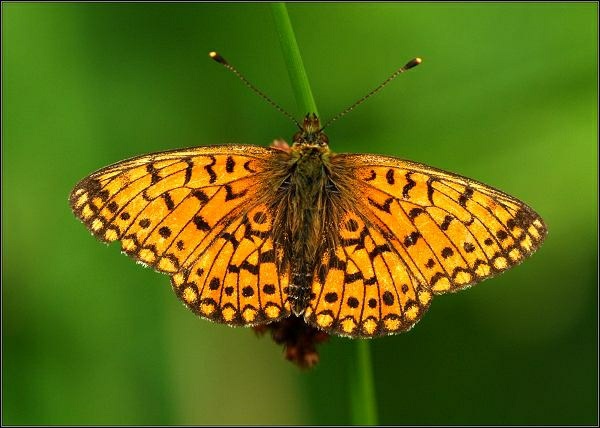
|
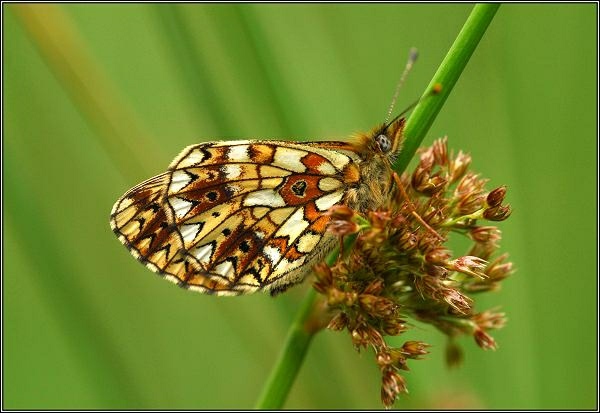
|
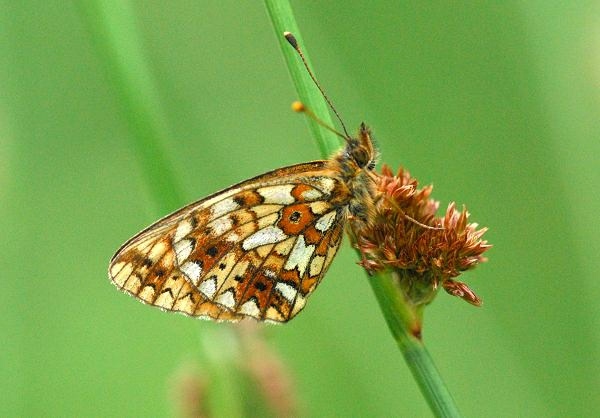
|
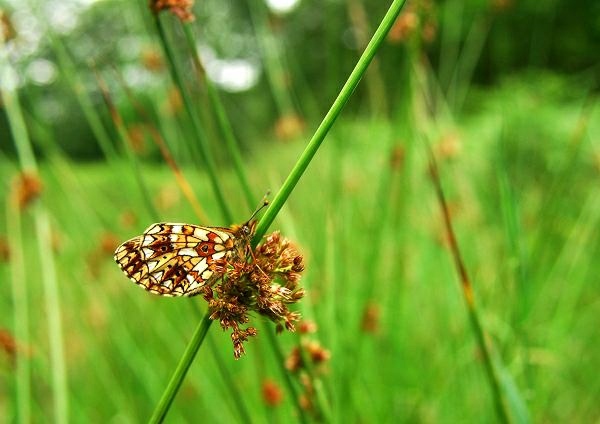
|
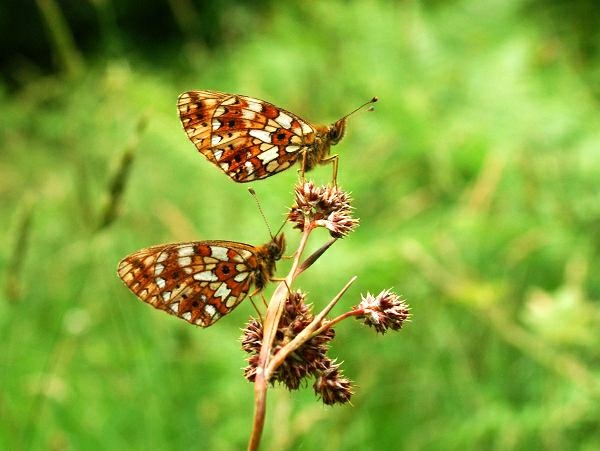
|
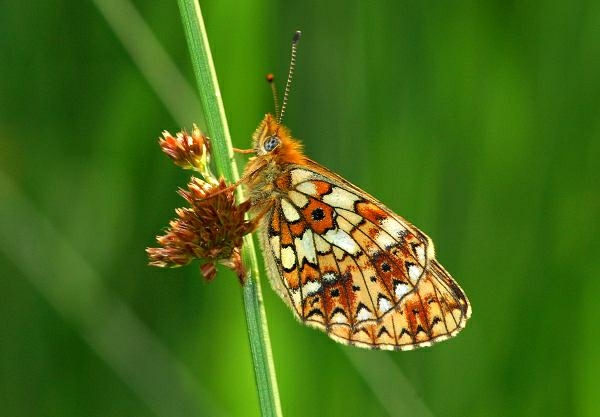
|
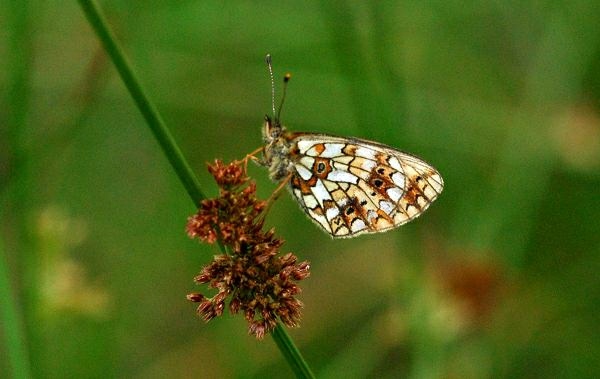
|
| Small Pearl-bordered Fritillary, the picture above of a pale varient (easier to see), roosting on Juncus. All pictures ©John Robinson |